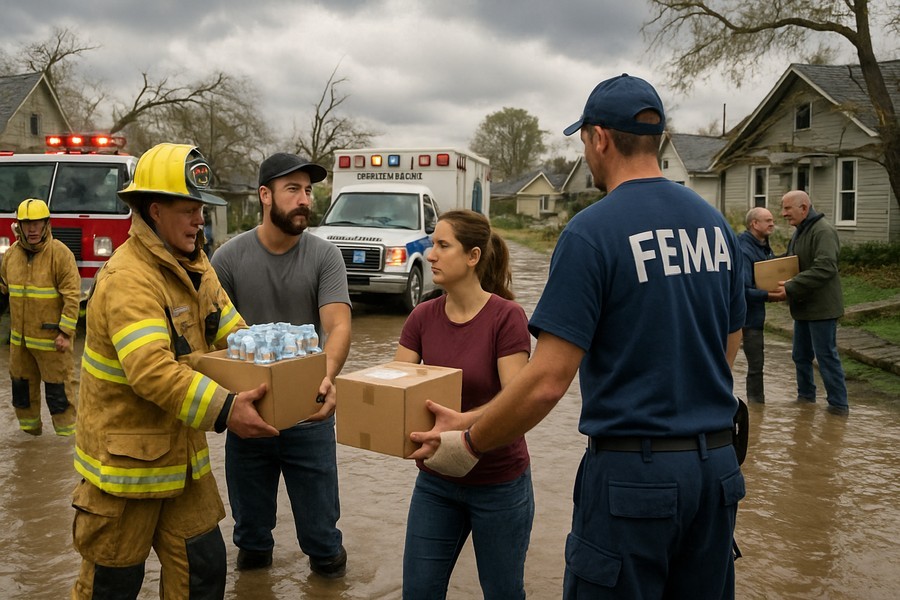
President Gives Green Light to Disaster Relief for Six Regions
The nation's leader has authorized federal relief following severe storms and flooding in six regions and tribal territories during the spring and summer.
Disaster Declarations and Aid Distribution
The disaster relief will assist four states: Kansas, North Carolina, North Dakota, and Wisconsin, together with tribal groups in Montana and South Dakota. The approval for aid came after more than a month of waiting for each state, excluding Wisconsin, following their official requests. This continues the recent trend of increased wait times for disaster relief.
Since assuming office in January, the president has sanctioned over 30 major disaster declarations. Prior to the most recent approvals, the average waiting period from the time of the request to approval was 34 days. However, the waiting periods for these most recent approvals ranged from a mere 15 days for Wisconsin’s August flooding aid request, to a lengthy 56 days for a tribal request for aid for flooding in Montana in May.
Increasing Delays in Disaster Aid Approval
Data suggests that the delay in approving federal disaster aid has been increasing over time, regardless of the political party in power. In the 1990s and early 2000s, requests for presidential disaster declarations were typically granted in under two weeks. This increased to about three weeks during the past decade under presidents from both major parties. During the current president's first term, the average time to approve requests has been 24 days.
A member of the White House staff stated that the president is providing "a more thorough review of disaster declaration requests than any Administration has before him" to ensure that federal tax dollars are spent wisely.
However, these delays mean that individuals must wait longer to receive federal aid for daily living expenses, temporary lodging, and home repairs. Furthermore, delays in disaster declarations can impede recovery efforts by local officials who are unsure whether they will receive federal reimbursement for cleaning up debris and rebuilding infrastructure.
Public and Individual Assistance
The latest approvals have sanctioned public assistance for local governments and nonprofits in all cases except Wisconsin, where assistance for individuals was approved. However, this does not rule out the possibility of the federal government later also approving public assistance for Wisconsin.
Initial estimates from the administration of Wisconsin’s governor state that more than 1,500 residential structures were destroyed or suffered major damage in August flooding, costing over $33 million. In addition, more than $43 million in public sector damage was reported across six counties.
Though aid was requested for residents in six counties, it was only approved for three. The governor expressed his commitment to continue urging for full approval of his request, and to fight to ensure Wisconsin receives all the resources needed and available. He also thanked the efforts of other officeholders from his party, though did not mention the president or any members of the opposing party.
Unusual Number of Disaster Declarations
While the approval of six major disaster declarations in one day may seem unusual for some presidents, it is not uncommon for the current leader. He approved seven disaster requests on July 22 and nine on May 21.
However, requests for hazard mitigation assistance — a once-standard addition that aids recipients in rebuilding with resilience — have not been approved since February.
